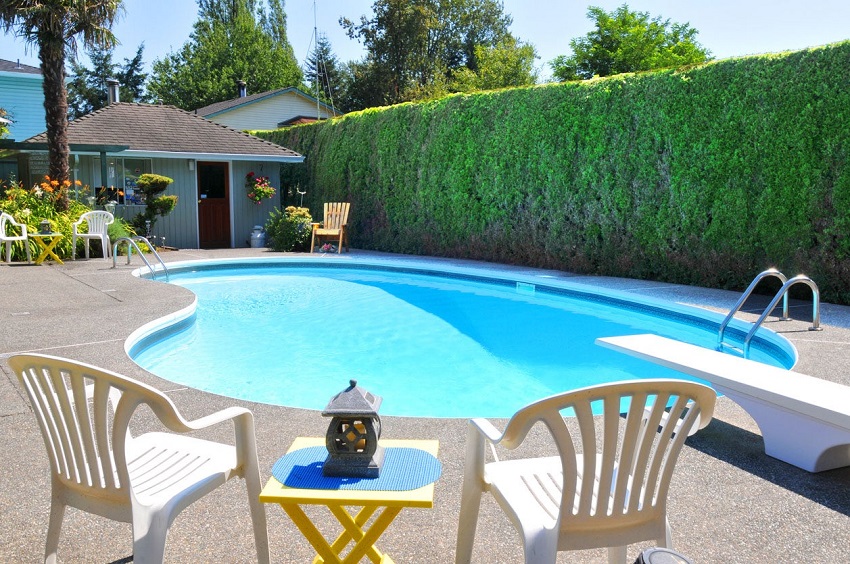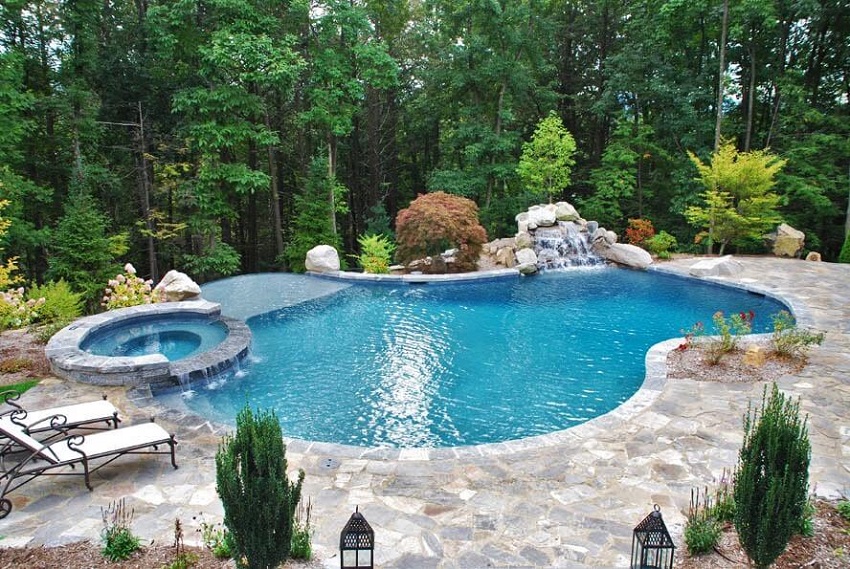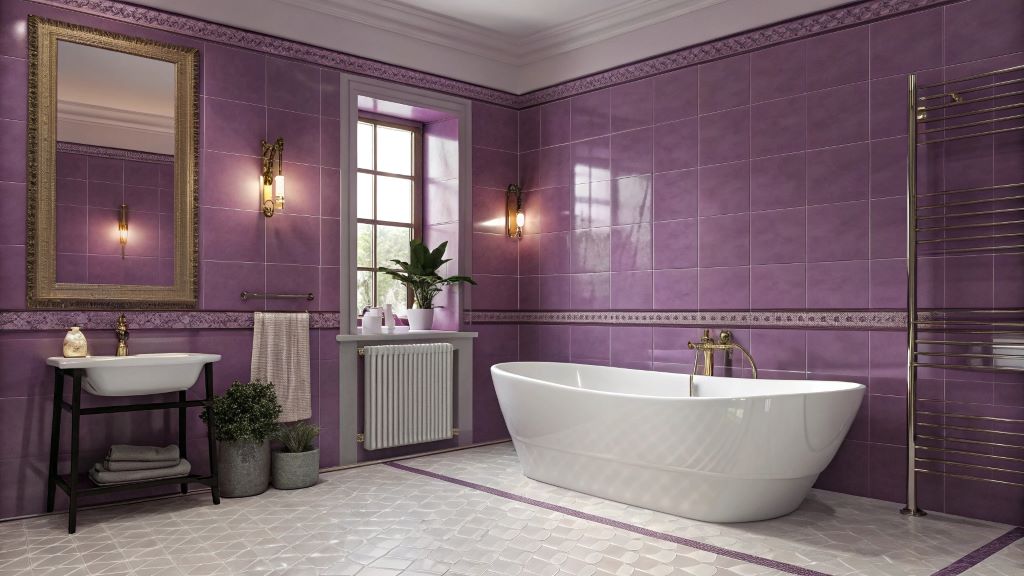If you’ve ever dreamt of having your private oasis in your backyard, complete with crystal-clear water and the soothing sound of splashing, you may have considered installing an inground pool. But before diving headfirst into your pool project, you probably wonder, “How much is an inground pool?” In this article, we’ll explore how much is an inground pool, discuss average pricing, break down the components, and provide insights on cost savings and financing options. So, let’s jump right in and make a splash with the details!
An inground pool, as the name suggests, is a pool that is built into the ground, creating a permanent structure that enhances your outdoor living space. Unlike above-ground pools, typically made of steel or resin, inground pools offer a wide range of customization options, allowing you to create a pool that perfectly suits your style, space, and budget.
The Growing Popularity of Inground Pools
In recent years, the popularity of inground pools has soared as more and more homeowners recognize the tremendous value they bring. Not only do inground pools provide a refreshing escape from the summer heat, but they also serve as a centerpiece for entertaining, relaxation, and family fun. With advancements in design, technology, and construction techniques, inground pools have become more accessible and affordable, making them a desirable addition to any property.
Factors Affecting the Cost of an Inground Pool
Installing an inground pool involves several factors that influence its overall cost. Let’s take a closer look at these considerations:
Pool Size and Shape
The size and shape of your pool play a significant role in determining the cost. Larger pools require more excavation, materials, and labor, increasing expenses. Opting for a custom shape or design may involve additional engineering and construction work, which can impact the overall price.
Construction Materials
The choice of construction materials also affects the cost of an inground pool. The three primary options are concrete, vinyl, and fiberglass. Concrete pools offer the most flexibility in size, shape, and design but are the most expensive. Vinyl pools are typically more affordable and have a smooth, non-porous surface. Fiberglass pools are pre-manufactured shells installed as a whole, offering a quicker installation process and moderate pricing.
Additional Features and Accessories
Adding special features and accessories to your pool can elevate your swimming experience but can also increase the cost. Features like waterfalls, slides, lighting, heating systems, and automated controls add aesthetic appeal and functionality. It’s essential to consider your priorities and budget when selecting these optional enhancements.
Location and Site Preparation
The location and condition of your property can impact the cost of an inground pool. Sites with challenging access, uneven terrain, or extensive excavation may require additional labor and equipment, adding to the overall expenses. It’s advisable to consult with a professional pool contractor to assess your property and provide an accurate estimate.
Labor and Installation Costs
The cost of labor and professional installation is another crucial factor to consider. Skilled pool builders have the expertise and experience to ensure your pool’s proper construction and installation. While hiring professionals add to the upfront cost, it ensures quality workmanship and reduces the risk of costly mistakes or repairs down the line.
The Average Cost of an Inground Pool
Now that we’ve explored the key factors that affect the cost. Let’s discuss the average pricing range for inground pools.
Price Ranges Based on Pool Types
The cost of an inground pool varies depending on the pool type you choose: concrete, vinyl, or fiberglass.
Concrete Pools
Concrete pools, also known as gunite or shotcrete pools, offer the highest customization and durability. They can be designed to fit any size or shape and offer a variety of finishes, such as plaster, aggregate, or tile. However, concrete pools tend to be the most expensive, with prices ranging from $50,000 to $100,000 or more, depending on the complexity of the design and additional features.
Vinyl Pools
Vinyl pools are constructed with a steel or polymer frame and a vinyl liner that holds the water. They are generally more affordable than concrete pools, with prices ranging from $30,000 to $60,000. Vinyl liners come in various patterns and colors, offering some customization options. However, they may require replacement every 10 to 15 years, adding to the long-term maintenance costs.
Fiberglass Pools
Fiberglass pools are pre-manufactured shells made of fiberglass-reinforced plastic. They are factory-built to your specifications and then transported to your site for installation. Fiberglass pools offer quick installation and have a smooth, non-abrasive surface. They typically range in price from $40,000 to $80,000, depending on the size, shape, and additional features.
Regional Variations in Pricing
It’s important to note that the cost of inground pools can vary significantly based on your geographical location. Factors such as local market conditions, labor costs, and material availability can influence the pricing. Pools in metropolitan areas or regions with higher living costs are more expensive than those in rural or less affluent areas.
Additional Costs to Consider
When budgeting for an inground pool, it’s crucial to account for additional costs beyond the pool itself. Some of these expenses may include:
Permits and Inspections
Before beginning construction, you may need to obtain permits and undergo inspections to ensure compliance with local building codes. Permit costs can vary depending on your location and the project’s complexity.
Landscaping and Hardscaping
Enhancing the area around your pool with landscaping, hardscaping, and patio materials adds beauty and functionality to your outdoor space. Consider budgeting for plants, trees, shrubs, decorative stones, pavers, or concrete for your pool deck.
Fencing and Safety Measures
Many jurisdictions require pools to be enclosed with a fence or barrier to ensure safety, particularly if you have young children or pets. The cost of a pool fence or safety measures should be factored into your overall budget.
Cost Breakdown of Inground Pool Components
To better understand the pricing, let’s break down the components of building an inground pool.
Excavation and Site Preparation
Excavation and site preparation involves clearing the area, digging the hole for the pool, and ensuring proper grading and drainage. This step is crucial to create a stable foundation for your pool. Excavation costs can vary based on the complexity of the terrain, accessibility, and the volume of soil that needs to be removed.
Pool Shell Construction
The pool shell is the structure that holds the water and provides the shape and integrity of the pool. The cost of constructing the pool shell depends on the chosen construction material, such as concrete, vinyl, or fiberglass. Concrete pools require steel reinforcement, gunite or shotcrete application, and finishing with plaster or other materials. Vinyl pools involve installing a steel or polymer frame and fitting a vinyl liner. Fiberglass pools are pre-manufactured shells delivered and installed as a whole unit.
Plumbing and Electrical Work
Plumbing and electrical systems are crucial for properly functioning your inground pool. Plumbing includes the installation of pipes, valves, and fittings for water circulation, filtration, and drainage. Electrical work involves wiring the pool equipment, such as pumps, filters, heaters, and lighting. Hiring licensed professionals to handle plumbing and electrical tasks ensures compliance with safety codes and standards.
Filtration and Circulation Systems
Filtration and circulation systems are essential for maintaining clean and balanced water in your pool. This includes installing a filtration unit, pumps, skimmers, and drains. Depending on your preferences and budget, you may opt for basic or more advanced systems, such as variable-speed pumps or automated controls.
Pool Decking and Finishing Touches
The pool deck provides a functional and aesthetic space around your pool where you can relax, sunbathe, or entertain guests. Pool decking options include concrete, pavers, natural stone, or wood decking. The pool decking cost depends on the chosen material, size, complexity, and additional features like seating areas or built-in fire pits. Additionally, you may want to add finishing touches like water features, slides, or custom lighting to enhance the overall ambiance of your pool area.
Factors Influencing the Cost Savings of an Inground Pool
While the cost of an inground pool may seem substantial, several factors can help you save money without compromising quality and enjoyment. Let’s explore some cost-saving considerations.
DIY vs. Professional Installation
One way to potentially save on the overall cost is to consider a DIY approach for certain aspects of the pool project. However, evaluating your skills, experience, and available time is crucial before taking on any tasks yourself. Building an inground pool requires specialized knowledge and expertise, especially for excavation, plumbing, and electrical work. A poorly executed DIY project can lead to costly mistakes and future repairs, outweighing the initial savings. It’s advisable to consult with professionals and consider a hybrid approach where you handle some aspects while leaving the critical components to experts.
Seasonal Discounts and Promotions
Pool builders often offer seasonal discounts or promotions to attract customers during slower periods. By planning your pool installation during the offseason or taking advantage of promotional offers, you may secure cost savings or additional features without stretching your budget.
Pool Maintenance and Operating Costs
While not directly related to the initial installation cost, considering the long-term maintenance and operating costs is crucial for budget planning. Opting for energy-efficient equipment, such as variable-speed pumps and LED lighting, can significantly reduce ongoing expenses. Additionally, regular maintenance and proper water chemistry management can extend the lifespan of your pool and reduce the likelihood of costly repairs or replacements.
Financing Options for Inground Pools
If the upfront cost of an inground pool exceeds your immediate budget, several financing options can help you bring your dream pool to reality. Let’s explore some common financing avenues:
Personal Savings and Budgeting
Using personal savings is the most straightforward option for financing your pool project. By setting aside funds specifically for this purpose, you can avoid interest charges and maintain full ownership of your pool. Proper budgeting and financial planning can help you determine the amount you can comfortably allocate to your pool project.
Home Equity Loans and Lines of Credit
Homeowners can tap into the equity of their property through home equity loans or lines of credit. These options allow you to borrow against the value you’ve built in your home. The interest rates on these loans are typically lower than other forms of unsecured financing. However, remember that using your home as collateral means there is a risk of foreclosure if you cannot make the loan payments.
Pool Financing Companies
Several specialized pool financing companies offer loans and programs tailored specifically for inground pool projects. These companies understand the unique aspects of pool financing and can provide competitive interest rates and flexible repayment terms. Researching and comparing different options is advisable to find the most suitable financing solution for your needs.
Contractor Financing Options
Sometimes, pool builders or contractors offer financing options or partnerships with financial institutions. These arrangements can simplify the financing process and provide a seamless experience. However, reviewing the terms and conditions, interest rates, and potential fees associated with contractor financing is essential to ensure it aligns with your financial goals.
Maintaining and Protecting Your Inground Pool Investment
Once your inground pool is installed, it’s essential to properly maintain and protect your investment to ensure its longevity and enjoyment. Here are some key considerations:
Regular Cleaning and Maintenance
Regular cleaning and maintenance are essential to keep your pool in optimal condition. This includes skimming debris, vacuuming, brushing the walls, and emptying skimmer baskets. Additionally, you’ll need to maintain proper water chemistry by testing and balancing the pool’s pH, alkalinity, and sanitizer levels. Consistent maintenance helps prevent algae growth, staining, and equipment damage.
Water Chemistry and Pool Balancing
Maintaining balanced water chemistry is crucial for the safety and comfort of swimmers and the longevity of pool equipment. Regularly testing and adjusting pH, alkalinity, calcium hardness, and sanitizer levels is essential. Chemical imbalances can lead to issues like cloudy water, skin and eye irritation, and equipment corrosion. Consult with a pool professional or use reliable water testing kits to properly balance your pool’s chemistry.
Winterization and Offseason Care
If you live in an area with cold winters, winterizing your pool is necessary to protect it from freezing temperatures and potential damage. This process involves lowering the water level, draining the plumbing lines, adding winterizing chemicals, and covering the pool. Proper winterization prevents freeze-thaw cycles that can cause cracks or damage to the pool structure. Additionally, off-season care may involve maintaining the pool cover, checking equipment periodically, and preparing for the pool’s reopening in the spring.
Pool Safety and Insurance Considerations
Pool safety should be a top priority for any pool owner. Installing a safety fence or barrier and self-closing gates and pool alarms can help prevent accidents and ensure compliance with local regulations. It’s also advisable to review your homeowner’s insurance policy to ensure adequate coverage for your pool. Some insurance companies may require specific safety measures, such as pool enclosures or alarms, to cover pool-related incidents.
Conclusion
Installing an inground pool can transform your backyard into a private oasis, providing endless relaxation, recreation, and enjoyment. The cost of an inground pool varies based on several factors, including pool size, construction materials, additional features, and location. Concrete pools are the most expensive, followed by vinyl and fiberglass options. When budgeting for your project, it’s crucial to consider the long-term costs of maintenance, repairs, and ongoing pool operation.
By carefully evaluating your needs, preferences, and budget and exploring financing options, you can bring your dream pool within reach. Remember to prioritize proper maintenance and care to protect your investment and ensure the longevity and enjoyment of your inground pool for years to come.





